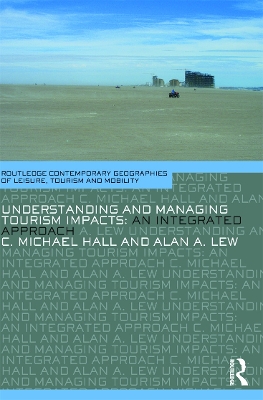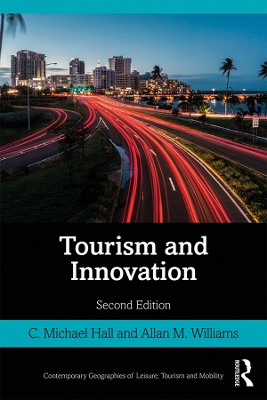Contemporary Geographies of Leisure, Tourism and Mobility
4 total works
As one of the world’s largest industries, tourism carries with it significant social, environmental, economic and political impacts. Although tourism can provide significant economic benefits for some destinations, the image of tourism as a benign and environmentally friendly industry has often been challenged. There is a clear and growing body of evidence that suggests that the effects of tourism development are far more complex than policy-makers usually suggest and that the impacts of tourism occur not just at the destination but at all stages of a tourist’s trip. Furthermore, tourism does not exist in a vacuum. Broader social and environmental changes also shape the form, growth and experience of tourism development.
This text provides a clear, accessible and up-to-date synthesis of tourism’s role in our contemporary world, both as an agent of change, and as a response to it. Tourism-related change is approached from a framework that illustrates the changing environments in which they occur, including the spatial scale of such impacts and the effects of these impacts over time. This framework is then applied to the economic, socio-cultural and physical dimensions of tourism. After examining the different forms of tourism-related impacts, the book then discusses the role of planning as part of an integrated approach to the mitigation of undesirable impacts and the maximization of the desirable benefits of tourism development. Case studies and illustrations from a variety of locations from around the world are used throughout the book to exemplify key themes and issues; additionally figures and tables serve to elucidate statistical data.
Understanding and Managing Tourism Impacts illustrates that when well managed tourism can make a positive contribution to destinations. The books use of issues of scale, time and form to illustrate the effects of tourism provide an accessible and significant reminder that tourism’s impacts vary over time and space, affects both the visitor and the host community, and can be unpredictable in its consequences. Chapter objectives, recommended readings, and links to web-based material help students, practitioners and researchers to grasp the broader implications of tourism development in today's world. With tourism increasingly being implicated as a factor in climate and environmental change, and with the benefits and costs of tourism as a form of economic development being examined more closely than ever, this book provides a timely contribution to help clarify the potentials and pitfalls of contemporary tourism.
The world’s polar regions are attracting more interest than ever before. Once regarded as barren, inhospitable places where only explorers go, the north and south polar regions have been transformed into high profile tourism destinations, increasingly visited by cruise ships as well as becoming accessible with direct flights. Tourism is seen as one of the few economic opportunities in these regions but at the same time the polar regions are being opened up to tourism development they are being affected by a number of new factors that are interconnected to travel and tourism. Climate change, landscape and species loss, increasing interest in energy resources and minerals, social changes in indigenous societies, and a new polar geopolitics all bring into question the sustainability of polar regions and the place of tourism within them.
This timely volume provides a contemporary account of tourism and its impacts in polar regions. It explores the development and prospects of polar tourism, as well as tourism’s impacts and associated change at high latitudes from environmental, economic, social and political perspectives. It draws on cutting edge research from both the Arctic and Antarctic to provide a comparative review and illustrate the real life issues arising from tourism’s role in these regions. Integrating theory and practice the book fully evaluates varying perspectives on polar tourism and proposes actions that could be taken by local and global management to achieve a sustainable future for polar regions and development of tourism.
This complete and current account of polar tourism issues is written by an international team of leading researchers in this area and will have global appeal to higher level students, researchers, academics in Tourism, Environmental Studies, Arctic/Polar Studies and conservation enthusiasts alike.
This ground-breaking volume on the relationships between tourism and innovation provides an overview of relevant innovation theories and related literatures on entrepreneurship, productivity, regional development and competitiveness, and their significance to contemporary tourism practices.
Innovation is a key concept in business and entrepreneurial studies and the broader social sciences. Yet, despite its policy and academic importance, historically little attention has been given to the role of innovation in tourism and the corresponding contribution of tourism-related human mobility to regional, firm, and product innovation. This book emphasises that innovation in tourism is much more than a series of technological innovations, as important as they are, and instead needs to be understood in an economic, social, and political context, with particular stress being placed on the extent to which innovations are shaped by the framework of governance and regulation, as well as by institutional factors and activities of individual actors and entrepreneurs.
It is structured so as to introduce the reader to the overall significance of innovation at various levels and the role that innovation plays in firm and place competition. Supported with case studies throughout, this book is essential reading for all tourism students.


